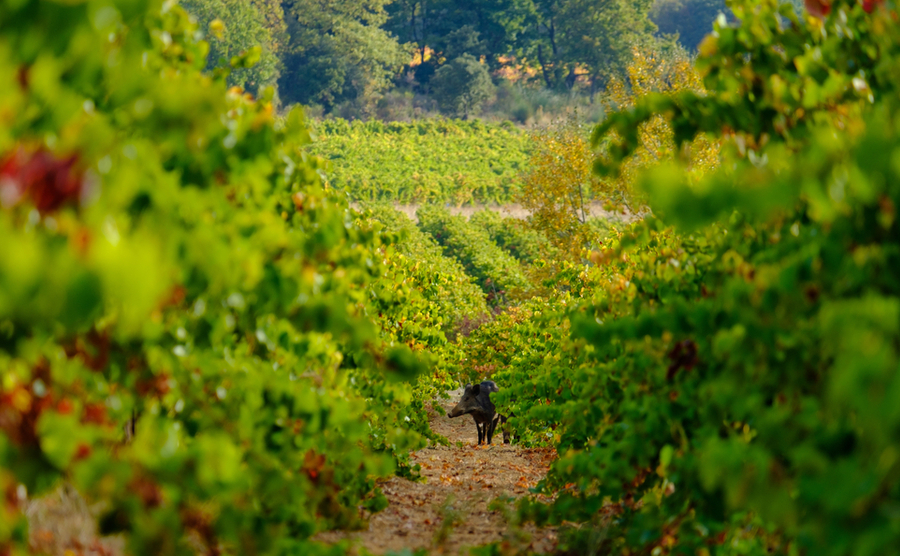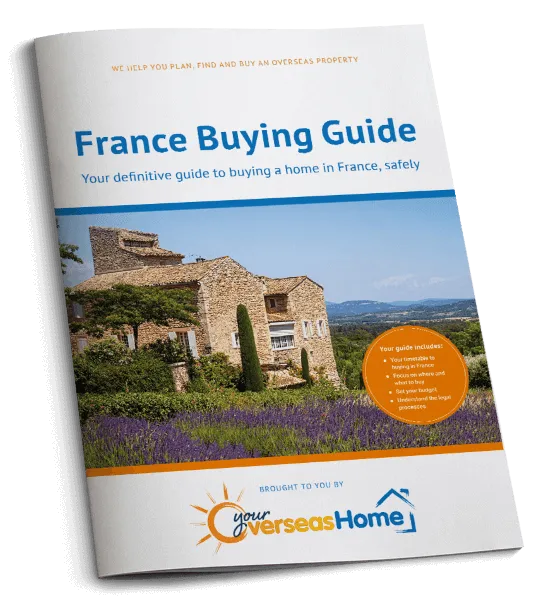Many searching for their new life in France, choose more rural locations than they previously lived in. That’s mainly due to the great value of French property. But with that, comes both the joys and perils of country living in France. Including the wildlife. Here we meet just some of the wildlife that you should expect to see in France. Some perhaps, more welcome than others.
Wild Boar
You will be hard pushed to avoid these animals if embarking on country living in France. In the past they were renowned as an expected part of rural life, often seen happily wandering and snuffling around their natural country habitat. But now, these animals are spotted more and more frequently around villages and towns in France. Whilst initially speculated as a direct result of the COVID pandemic, during which routine activity of the chasse was halted, ecologists argue that this is more likely as a result of human activity. Along the same lines perhaps as that of urban foxes in the UK.
The first sight of a wild boar is both spellbinding and to the sensible amongst us, perhaps fear inducing. These enormous creatures are not actively trying to do harm. However they do spell trouble certainly for farmers, causing damage and destruction to crops and fields. They can also cause chaos for drivers on the roads at night.
Find homes in France via our property portal.
Tell-tale signs of an overnight visit from wild boars is the digging up of your prized lawns. Whilst perhaps a mystery on first sighting, you will quickly learn the signs of boars having passed by. They are purely looking for food. But hold no respect for people’s gardens, or in fact the laws of the road. Anyone coming unexpectedly across one whilst driving at night is bound to remember it. For in the fight of boar against car, the boar often wins. Due to the size and weight of them, they can cause ferocious damage to vehicles. Which is why people routinely have anti-boar sensors in their cars. Said to emit sonar sounds warning the boars that vehicles are approaching.
The hunt
These creatures are one of the main targets of the hunt in France. While you may or may not agree in principle with that, it is argued that this is entirely necessary in order to keep the ever-growing numbers down. As with any animal, the most dangerous time to have a face-to-face encounter is when the animal is with their young (known as humbugs). It’s then they’ll be at their most defensive and, potentially, most dangerous.
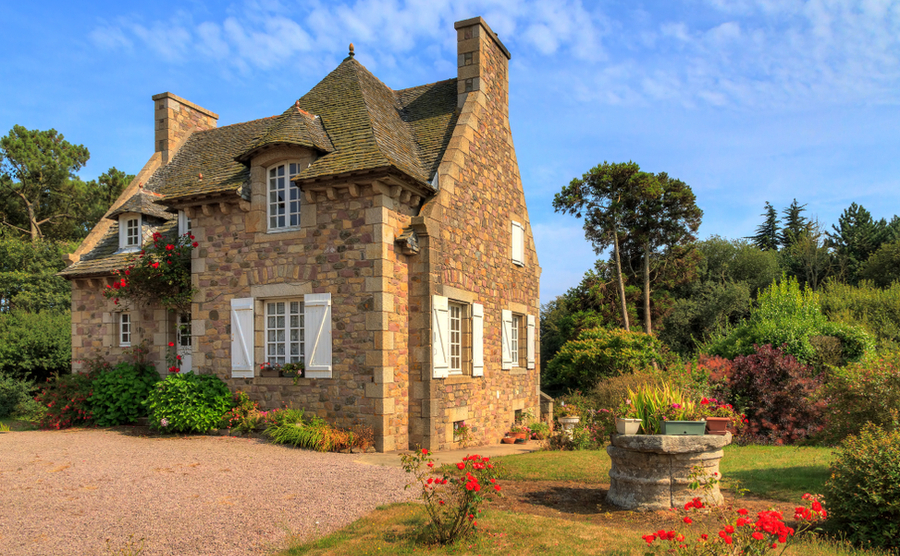
A traditional country house in Brittany, France,
Snakes
Don’t worry, I won’t scare you with images, I know they’re not the favourite, however reptiles are hugely prevalent in France. Snakes perhaps being the most likely to strike fear into many of us. While it is common to see them, they will fortunately won’t hang around for long. Whatever we may think, they are more scared of us than we of them. They do their best to hide and carry on with their lives in private. They can move at tremendously fast speeds. The general rule with snakes to remember when country living in France, is that round head and round eyes is normally ok, pointed head and eyes is generally best avoided.
There are many types of snakes you will share your life with in France, like it or not. Most of them will mean you no harm. It is said that within rural France, during summer you will never be more than 50m from the nearest snake but that doesn’t mean you will actually see them. The efficiency of their hearing means that the slightest sound or vibration, alerts them to your presence which they will actively avoid. Do be careful though. Rummaging around in woodpiles or lifting up breezeblocks can be a risky business. As this is where they often choose to hanker down. And like most of us, when disturbed or surprised, they can react more quickly than you!
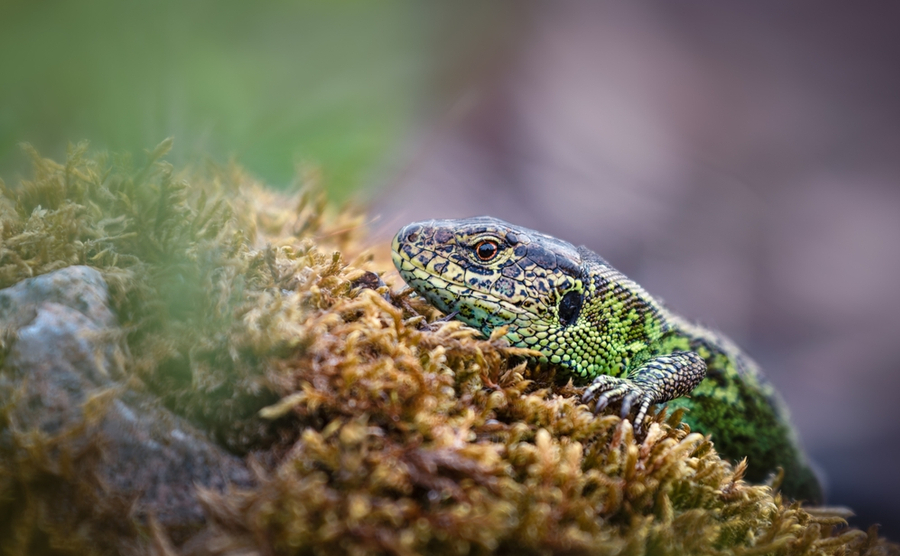
The sand lizard (Lacerta agilis) is distributed across most of Europe
Lizards
Other reptiles however bring joy rather than fear. Lizards are a part of daily life of country living in France. These lovely creatures are ever present from the start of spring and are the masters of sunbathing. Ambling around the place, their job is to eat insects. The most common variety of lizard are wall lizards and green lizards. Wall lizards live up to their name and are magnificent climbers, you will see them everywhere once the sunshine hits. Green lizards are more spectacular aesthetically. They are known to sit and wait for their prey. But don’t think them lazy, as they are capable of covering over 2.5 metres a second.
Find country homes in France via our property portal.
Insects
There are many insects that come part and parcel of country living in France. While many cause no harm, and others are majestic to see, some can be a nuisance. Flies are a big part of rural living and every person in France owns both a fly swat and possibly a red top fly catcher. Cockchafers or May bugs emit terrifying buzzing noises but are not remotely interested in you. Hummingbird Hawk moths are a joy to behold, hovering majestically whilst feeding on the nectar of flowers with their long proboscis.
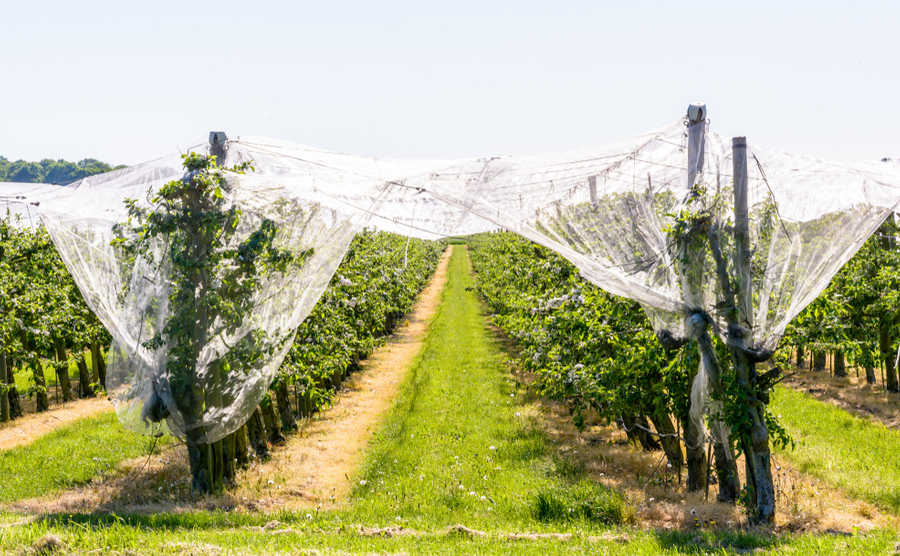
An apple orchard in the French countryside covered by a thin net veil to protect the fruit from insects and birds
Other insects are understandably not quite as popular. Perhaps one of the most feared for pet owners being the processionary caterpillar. If your new life in France is surrounded by pine trees this is one to most certainly be aware of. Their nests are immediately identifiable. Resembling balls of cotton nested within pine trees. While they will eventually turn into moths, when hatched they originally take the form of orange and brown coloured long haired caterpillars with blue banding.
They form a nose to tail convoy in transit which makes them easy to spot on pavements but more difficult in grassland. Beware – this hair is extremely hazardous and in fact urticating bristles which can cause allergic reactions or respiratory problems when making contact with skin. If unlucky enough to spot these on your property, the advice is to seek expert advice to destroy them. In the meantime you can purchase caterpillar traps to be set prior to them establishing themselves in trees.
Hornets
Likewise hornets are not a favourite and it’s easy to see why. The sheer size of them and the noise heralding their arrival at least announces their presence quickly. During summer months they can be a nuisance to country living in France. Particularly when night falls, due to their natural attraction to lights. But they rarely thankfully sting unless provoked. So just best to avoid them. If you spot nests, it is clearly best to get them destroyed. While European hornets are bigger, perhaps Asian hornets are actually of greater threat. Destroying bees and increasing rapidly in numbers. If you identify an Asian hornets nest, it is important to notify your local Marie as in fact the location of nests are tracked and recorded.
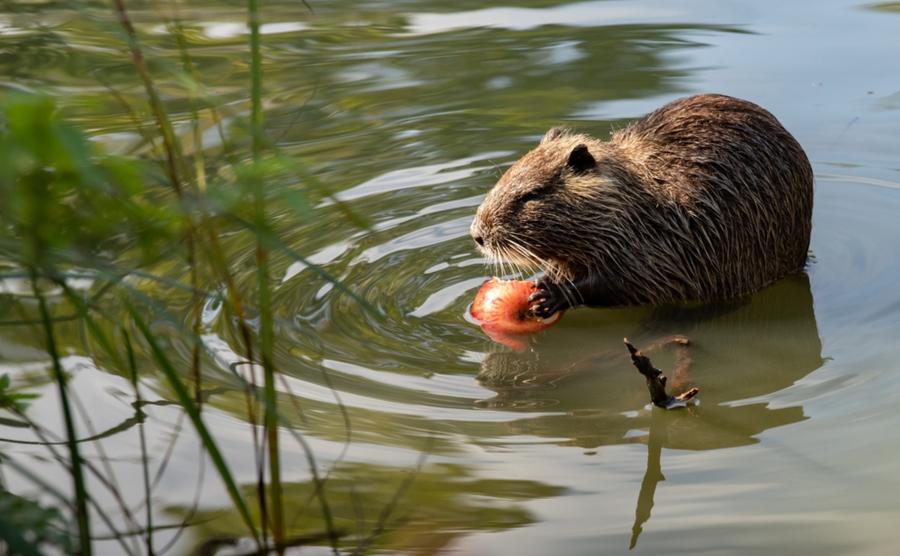
A coypu in the shallow water of a small pond in northern France.
Coypus
If your country living in France, is based near rivers or lakes, you will be sure to see a Coypu or two (Ragondin). Originating from South America, their residence in France since the 19th Century results from being imported for their cheap fur. Following the great depression of 1930, many then escaped or were deliberately released into the countryside. These creatures, listed as invasive species in France have been rapidly growing since. Females reproduce two or three times a year, resulting in 5-7 babies per litter.
Their preference is freshwater environments; Their homes are burrows created in riverbanks as well as huts created skillfully from pilfered foliage. They are known for the accelerated destabilization of banks of rivers and lakes much like moles within gardens.
Despite being naturally nocturnal they are active often during the day. Identifiable by their large orange incisors. Unlike their relative the beaver, these animals are not equipped to survive truly harsh winters. They are not normally confrontational, preferring to retreat and hide. However be careful with smaller dogs who may surprise them, particularly when the coypus are with their young.
With all that said, although country living in France may bring you into contact with wildlife you may not have counted on, it is a timely reminder that we are not alone. We in fact, have chosen to live within the natural habitat of these creatures, rather than the other way round. We have to share our planet with them like it or not. They are an important part of our ecosystem. But awareness and knowledge is the key here to living safely and happily alongside each other.


